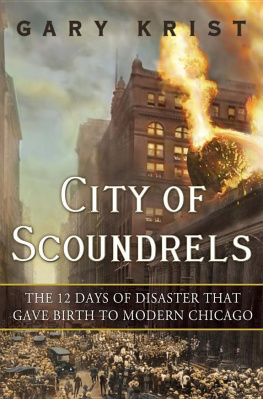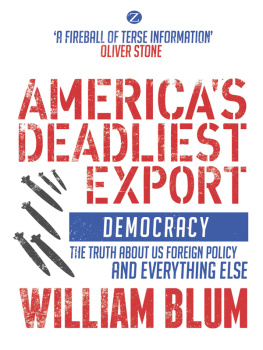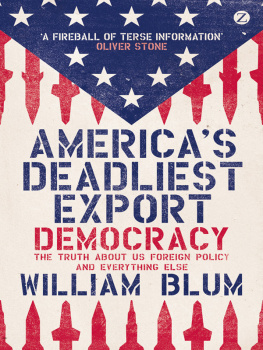Krist - The white cascade: the true story of Americas deadliest avalanche
Here you can read online Krist - The white cascade: the true story of Americas deadliest avalanche full text of the book (entire story) in english for free. Download pdf and epub, get meaning, cover and reviews about this ebook. City: New York, year: 2007, publisher: Henry Holt and Company, genre: Art. Description of the work, (preface) as well as reviews are available. Best literature library LitArk.com created for fans of good reading and offers a wide selection of genres:
Romance novel
Science fiction
Adventure
Detective
Science
History
Home and family
Prose
Art
Politics
Computer
Non-fiction
Religion
Business
Children
Humor
Choose a favorite category and find really read worthwhile books. Enjoy immersion in the world of imagination, feel the emotions of the characters or learn something new for yourself, make an fascinating discovery.

The white cascade: the true story of Americas deadliest avalanche: summary, description and annotation
We offer to read an annotation, description, summary or preface (depends on what the author of the book "The white cascade: the true story of Americas deadliest avalanche" wrote himself). If you haven't found the necessary information about the book — write in the comments, we will try to find it.
Krist: author's other books
Who wrote The white cascade: the true story of Americas deadliest avalanche? Find out the surname, the name of the author of the book and a list of all author's works by series.
The white cascade: the true story of Americas deadliest avalanche — read online for free the complete book (whole text) full work
Below is the text of the book, divided by pages. System saving the place of the last page read, allows you to conveniently read the book "The white cascade: the true story of Americas deadliest avalanche" online for free, without having to search again every time where you left off. Put a bookmark, and you can go to the page where you finished reading at any time.
Font size:
Interval:
Bookmark:
GARY KRIST is the prizewinning author of three novelsBad Chemistry, Chaos Theory, and Extravaganceand two short-story collectionsThe Garden State and Bone by Bone. His book reviews, short stories, articles, and travel pieces have been featured in The New York Times, The Washington Post, Salon, National Geographic Traveler, The New Republic, and Esquire, and on National Public Radios Selected Shorts. His stories have also been anthologized in such collections as Men Seeking Women, Writers Harvest 2, and Best American Mystery Stories. He has been the recipient of the Stephen Crane Award, the Sue Kaufman Prize from the American Academy of Arts and Letters, and a fellowship from the National Endowment for the Arts. He lives in Bethesda, Maryland, with his wife and their daughter.

GARY KRIST is the prizewinning author of the novels Bad Chemistry, Chaos Theory, and Extravagance, and of two short-story collections. The Garden State and Bone by Bone. His stories, articles, and travel pieces have been featured in noteworthy magazines, including National Geographic Traveler, GQ, and Esquire. He lives in Bethesda, Maryland, with his wife and daughter.
One pleasant surprise for a novelist writing his first nonfiction book is the sheer sociability of the process. Instead of sitting at home in front of a blank screen, I was regularly out in the world, interacting with historians, archivists, librarians, descendants of participants in the Wellington drama, and experts of all types. Some of these people eventually became my friends, but all came to share a greater or lesser interest in the book to be written. The project of historical nonfiction, I found, generates an extraordinary spirit of community and common purpose. It also creates an enormous debt of gratitude.
The White Cascade is first and foremost a railroad story, so I owe much to the various train experts who helped lead me through the mysteries of this fascinating and complex world. For enduring my constant questions and requests for information over the course of several years, railroad historian David Sprau deserves special mention. A former telegrapher, train dispatcher, assistant chief dispatcher, and short-line superintendent, Dave has an encyclopedic knowledge of Great Northern and Northern Pacific railroad operations that proved an invaluable resource for me throughout the writing of this book.
T. Michael Power, whose thirty-four-year railroad career began with train service in Spokane and took him through management positions in the Burlington Northern Santa Fes marketing and operations departments, was likewise a key source of guidance and information. Other experts who contributed to the book were Dr. George Fischer (who with his wife, Joan, offered me a warm welcome and a thorough GN tour of Minneapolis-St. Paul) and Father Dale Peterka (whose photography and expertise in all things GN is well known nationwide). Im also indebted to Stu Holmquist and various other members of the Great Northern Railway Historical Society; avalanche experts Jill Fredston, codirector of the Alaska Mountain Safety Center, and Charley Shiman-ski, education director of the Mountain Rescue Association; Ruth Ittner, the moving force behind the Iron Goat Trail, which now traces the old GN line through Stevens Pass; and Herb Schneider, who braved the elements on a chill, snowy day in December to lead a stranger from the East along the passable sections of the trail.
I found plenty of willing assistance in libraries and archives as well. In St. Paul, Dr. W. Thomas White and Elaine McCormick of the James J. Hill Reference Library were particularly helpful. Im also obliged to the staff of the Minnesota Historical Society, where the Great Northerns corporate records are held. Mark Behler, curator of the Wenatchee Valley Museum in Wenatchee, and Cheryl Gunselman, manuscripts librarian at the Manuscripts, Archives, and Special Collections division of the Washington State University Libraries in Pullman, were important Washington connections. Thanks also to Nicolette Bromberg, visual materials curator at the Special Collections of the University of Washington Libraries in Seattle, Elaine Miller of the Washington State Historical Society Research Center in Tacoma, Carolyn Marr of the Museum of History and Industry in Seattle, the staff of the Spokane Public Library, Steve Hubbard of the Fargo Public Library, and Leah Byzewski, director of the Grand Forks Historical Society. A special nod must go to Margaret Riddle and David Dilgard of the Northwest Room at the Everett Public Library, for assistance above and beyond the call of normal research-assistance duty. And, of course, my friend Alan Stein, staff historian of the trailblazing Web site HistoryLink.org, deserves thanks from me and everyone in the Wellington community for his online Wellington Scrapbook of newspaper articles ( www.historylink.org/Wellington/info.htm ), as well as many other interesting insights into the history of the Pacific Northwest.
Those more personally connected to the story of Wellington were also extremely helpful. Jeanne Patricia (Pat) May is the granddaughter of James H. and Berenice ONeill; she and her husband, Ron, kindly opened their house to me on several occasions so that I could pore over Pats collection of family photos, clippings, letters, and telegrams. (Thanks, too, to genealogist Sarah Little for finding the Mays in the first place.) I owe similar gratitude to Dolores Hensel Yates, the daughter of Wellington survivor A. B. Hensel; she and her husband, Keith, have both written about A.B.s Wellington experience and were generous in sharing the fruits of their research with me. Among other Wellington descendants who offered their knowledge, documents, and photos were John Topping (grandson of Ned), Craig Hanson (great-grandnephew of Joe Pettit), Barney Moore (son of Bill J. Moore and a former switchman and trainmaster himself), and John Deely (great-grandson of GN traffic manager M. J. Costello). I would also like to thank Danielle Devine and Vince Decker, current residents of the ONeill home in Everett, for inviting an unkempt loiterer into their house and sharing with him their own research about its history. A special note of thanks goes out to the amazing Ruby El Hult, who, though in her nineties, agreed to meet with me in 2004; Rubys pioneering work in the study of the Wellington avalanche has been instrumental in keeping the story alive into a second century.
Many other friends and associates provided guidance along the way, but Id like to make specific mention of my friends historian Michael Kazin, novelist Lisa Zeidner, law professor Bruce Morton, and all-around polymath and historical visionary Robert Wright (the last of whom has suffered through drafts of every book I have ever written). Id also like to thank my editors at Holt, Jennifer Barth and George Hodgman, for pushing me to include all of the important things I somehow left out of my first draft and to omit all of the less important things I had left in. A special thanks goes to my agent and friend Eric Simonoff at Janklow & Nesbit, who had the insight at a lunch in Manhattan one day to ask me the question, Have you ever thought about nonfiction? I had, but somehow I needed Eric to propel me down this new path. Ill always be grateful to him.
And, of course, while its vaguely insufferable when writers thank their families for putting up with them during the long, tedious process of book creation, I will risk insufferability by doing just that: To my wife, Elizabeth Cheng; my daughter, Anna; and my sweet hound, Lily, go my endless love and gratitude.
Font size:
Interval:
Bookmark:
Similar books «The white cascade: the true story of Americas deadliest avalanche»
Look at similar books to The white cascade: the true story of Americas deadliest avalanche. We have selected literature similar in name and meaning in the hope of providing readers with more options to find new, interesting, not yet read works.
Discussion, reviews of the book The white cascade: the true story of Americas deadliest avalanche and just readers' own opinions. Leave your comments, write what you think about the work, its meaning or the main characters. Specify what exactly you liked and what you didn't like, and why you think so.




